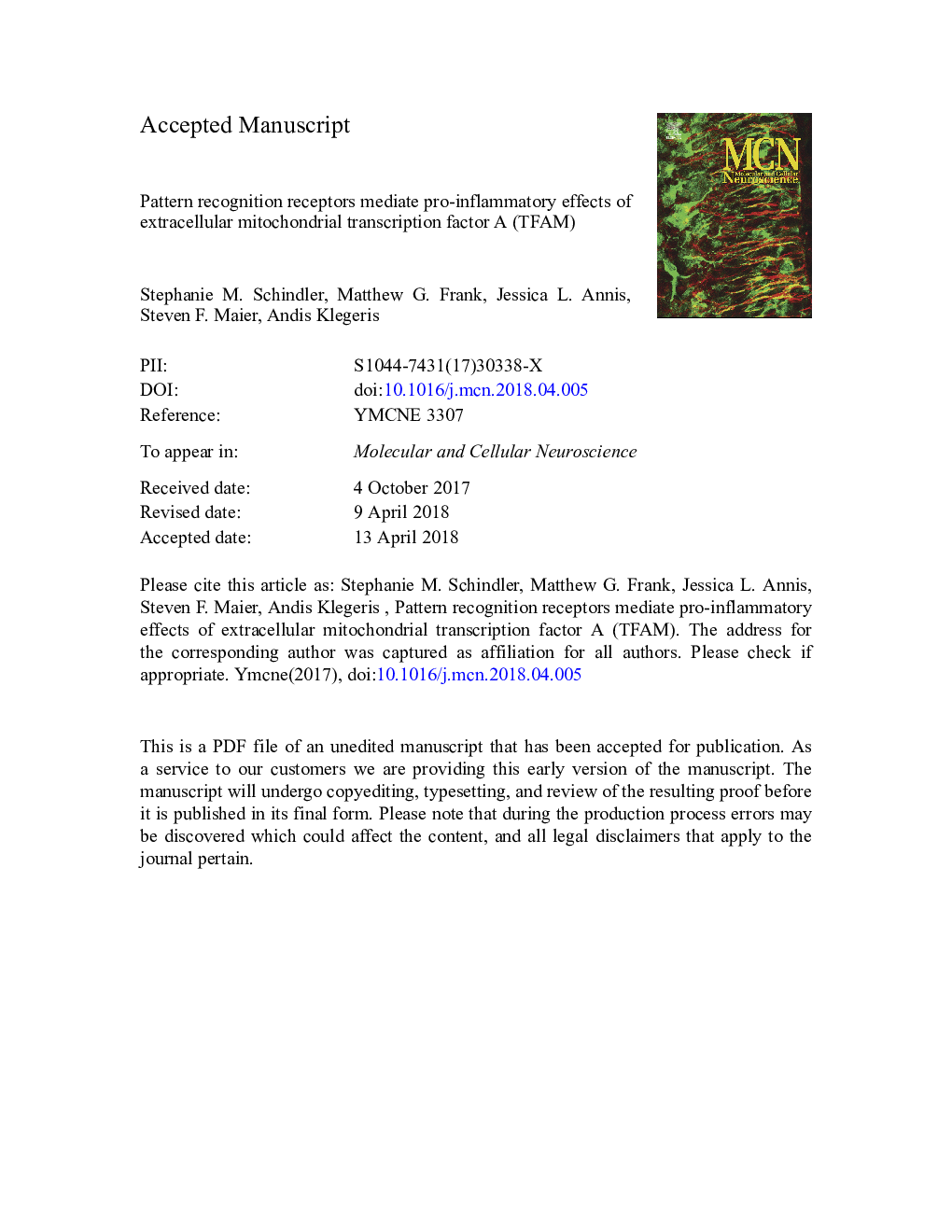| کد مقاله | کد نشریه | سال انتشار | مقاله انگلیسی | نسخه تمام متن |
|---|---|---|---|---|
| 8478359 | 1551117 | 2018 | 36 صفحه PDF | دانلود رایگان |
عنوان انگلیسی مقاله ISI
Pattern recognition receptors mediate pro-inflammatory effects of extracellular mitochondrial transcription factor A (TFAM)
دانلود مقاله + سفارش ترجمه
دانلود مقاله ISI انگلیسی
رایگان برای ایرانیان
کلمات کلیدی
موضوعات مرتبط
علوم زیستی و بیوفناوری
بیوشیمی، ژنتیک و زیست شناسی مولکولی
بیولوژی سلول
پیش نمایش صفحه اول مقاله

چکیده انگلیسی
Neuroinflammation is a common pathogenic mechanism for a number of neurodegenerative disorders including Alzheimer's and Parkinson's diseases. Microglia, the immune cells of the brain, contribute to the onset and progression of the neuroinflammation observed in these diseases. Microglia become activated and initiate an inflammatory response by interacting with a diverse set of molecules, including the group of endogenous proteins released upon cell damage, termed damage-associated molecular patterns (DAMPs). One of these molecules, mitochondrial transcription factor A (TFAM), has been shown to induce pro-inflammatory and cytotoxic responses of microglia in vitro. Here, we demonstrate that TFAM injected into the cisterna magna of male Sprague-Dawley rats upregulates (i) the expression of monocyte chemotactic protein (MCP)-1, interleukin (IL)-1β, IL-6, tumor necrosis factor (TNF)-α and nuclear factor-kappa B inhibitor alpha (NF-κBIA) in the hippocampus; (ii) the expression of MCP-1, IL-1β and TNF-α in the frontal cortex; and (iii) IL-1β protein concentration in both these brain regions. These same inflammatory mediators are upregulated in isolated rat microglia following their in vitro exposure to extracellular TFAM. Blocking the receptor for advanced glycation endproducts (RAGE) and the macrophage antigen complex (Mac)-1 by specific antibodies inhibited the TFAM-induced secretion of MCP-1 by THP-1 monocytic cells, which were used to model human microglia. Our data support the hypothesis that extracellular TFAM can interact with RAGE and Mac-1 to function as a DAMP that causes pro-inflammatory microglial activation. Blocking this interaction may represent a potential target for attenuating the neuroinflammation observed in neurodegenerative diseases.
ناشر
Database: Elsevier - ScienceDirect (ساینس دایرکت)
Journal: Molecular and Cellular Neuroscience - Volume 89, June 2018, Pages 71-79
Journal: Molecular and Cellular Neuroscience - Volume 89, June 2018, Pages 71-79
نویسندگان
Stephanie M. Schindler, Matthew G. Frank, Jessica L. Annis, Steven F. Maier, Andis Klegeris,